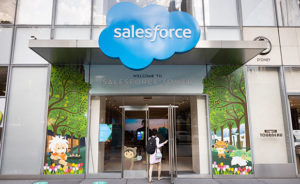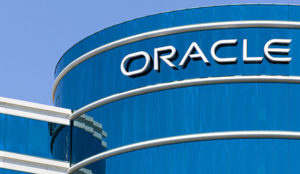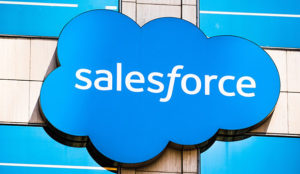Oracle’s struggle to enter the cloud infrastructure market was the focus of a recent article in Bloomberg Businessweek. The company came late to cloud computing, joining the fray only after competitors like Microsoft and Salesforce had established dominant positions, and newcomer Amazon Web Services leaped from a standing start to a position of dominance.
Amazon is so strong in the cloud that it is on the cusp of extinguishing the last challenges to its win of the 10-year US$10 billion Pentagon JEDI procurement.
At least that’s what a cursory look at the data shows. Certainly, the news isn’t great for Oracle, but the Businessweek piece, though not unexpected, might be a tad bit too pessimistic. The piece reads in part:”Oracle’s journey to the cloud has been a Sisyphean saga, with the software giant bruised by false starts, dead ends, and internal feuds. The company’s challenge to remodel its business for the modern age has led to hiring binges, followed by large rounds of worker firings, sagging employee morale, and the resignation of Thomas Kurian, an influential executive once seen as Ellison’s technological heir.” It’s all true, but I think it errs by taking a financial analysis perspective without considering others. Financial analysts go to many of the same conferences that I do, and they even ask similar questions about the technologies we follow. However, their focus is usually the next quarter, and whether or not a company will meet the expectations of Wall Street and thus preserve its share price.
So in terms of financial analysis, the company might wish it was in a better place. Hold on, though. The tech space still moves so swiftly that it’s impossible to count any vendor out or even to say it’s on the ropes.
Lemons to Lemonade
Consider Microsoft, which in the 1990s flooded the market with its browser, Internet Explorer. It was an attempt to gain control of a valuable new market, and governments on both sides of the Atlantic came down hard on Seattle’s finest.
A popular parlor game in some financial circles (second to the Kevin Bacon game) asked players what would they do if they couldn’t dominate the Internet? Twenty-five or so years later, the company is doing fine and has made a niche for itself in cloud computing — just not in the way originally envisioned.
Microsoft and the Internet is a classic lemons to lemonade story: one door closed and another opened. Fill in your own favorite clich. When a good company reaches a roadblock, it figures out a workaround. Said workaround might not materialize for some time, but perseverance is key. So, what spare parts might Oracle have lying around that it can turn into an appealing succotash?
For starters, at OpenWorld the company announced plans to deploy 20 new hyper-centers in the next year — a goal that would give it more data centers than Amazon.
“Some of those data centers are rented facilities within larger server farms owned by other businesses,” the Businessweek piece says. To which the logical next question is, and? It sounds like something some savant might say after entering a McDonald’s and asking to weigh a Quarter Pounder.
Oracle has acknowledged that it won’t replace Amazon Web Services and that its main mission is to remain competitive in databases and applications. It has a credible suite of offerings, starting with its autonomous database and associated artificial intelligence/machine learning-driven security and data warehouse offerings. It’s still early days, but the autonomous feature is a game changer in my humble opinion.
Standards and Controls
To that suite of new takes on old products, Oracle added Autonomous Linux, announced at its recent OpenWorld. The product is a freebie. Many financial types might scoff at investing in and launching such a product, but it has legs — and not simply as a game-changer for capturing market share.
Work with me on this. The future of information technology is the formation of a utility, similar to many of the utilities that bring us products and services that originated in the late 19th and 20th centuries.
The list includes telephone, cable and electricity, of course, but also water, sanitary and natural gas services. Today numerous tech product and service companies act like overindulged children in need of Mary Poppins. It’s a phase that industries go through on the way to becoming well-behaved members of utilities.
Cloud computing is the ultimate commoditization of IT, and commoditization precedes utility formation. The same could be said about social media. What’s standing in the way of utility formation is the adoption of appropriate standards and controls that would set up regulation before government steps in.
In order to achieve that, the industry needs order-of-magnitude improvements in uptime and security, and those are things that Oracle’s autonomous suite can bring to the conversation.
The autonomous products can run undeterred on Oracle hardware, supported by a self-patching, self-configuring, and self-upgrading operating system and database combination. However, that won’t be enough. Oracle needs like-minded partners, and it appears to be working to build alliances.
This year Oracle and Microsoft announced they would work together to connect their cloud services, an important milestone. Oracle also announced cooperation agreements with VMware and others.
If you’re thinking about utility formation, the best model might be the so-called electric grid, which is really made up of multiple grids and producers adhering to a set of standards that, in the end, provide the appearance of a grid. That’s what the future IT utility might look like, in my estimation.
So what about all those data centers Oracle is bringing up? They’re necessary. Oracle has a big installed base that needs to get to the cloud. Will they all go to Oracle? Probably not. Still, the company is positioning itself as a premium provider able to supply the needs of the biggest enterprises, the ones that can see the value of becoming part of the IT utility.
Oracle’s ongoing issue to deal with is its outreach to customers. It has reoriented toward the customer in the last few years and the results are obvious, but its efforts might not be enough to cause people with long memories to forget about the bad old days of software audits and litigation. Yet Oracle is making progress. The company needs to continue developing its customer-first strategy.
My Two Bits
Larry Ellison’s dream of dominating the cloud probably was never realistic. Back in the hardware days, roughly the 1980s, many people observed that the leaders in one form of computing, say mainframes, were not the ones to lead in the next, in that case minicomputers. A whole raft of startups carved up the microcomputer market in the 1990s.
The same thing might be happening in software. Oracle was one of the leaders of the relational database revolution and it successfully carried that mantle from the 1970s to the cloud computing era (lots of cloud apps run on Oracle).
It’s not going to dominate enterprise cloud computing infrastructure, though with 36 hyper-centers it will recapture a lot of its customers who are now running on-premises systems.
Oracle’s next opportunity might be, could be, maybe even ought to be, defining the IT utility structure that will be with us for decades.













































